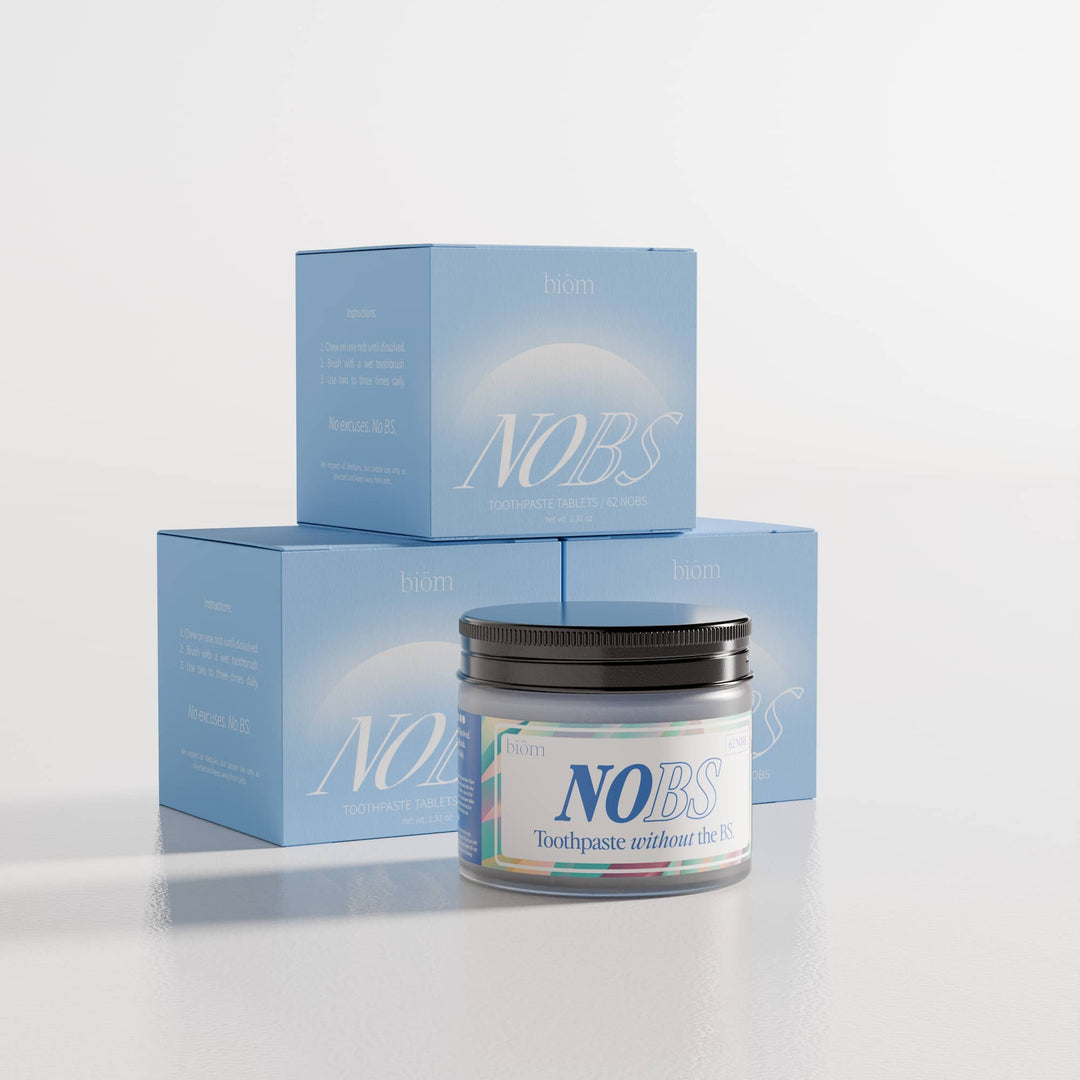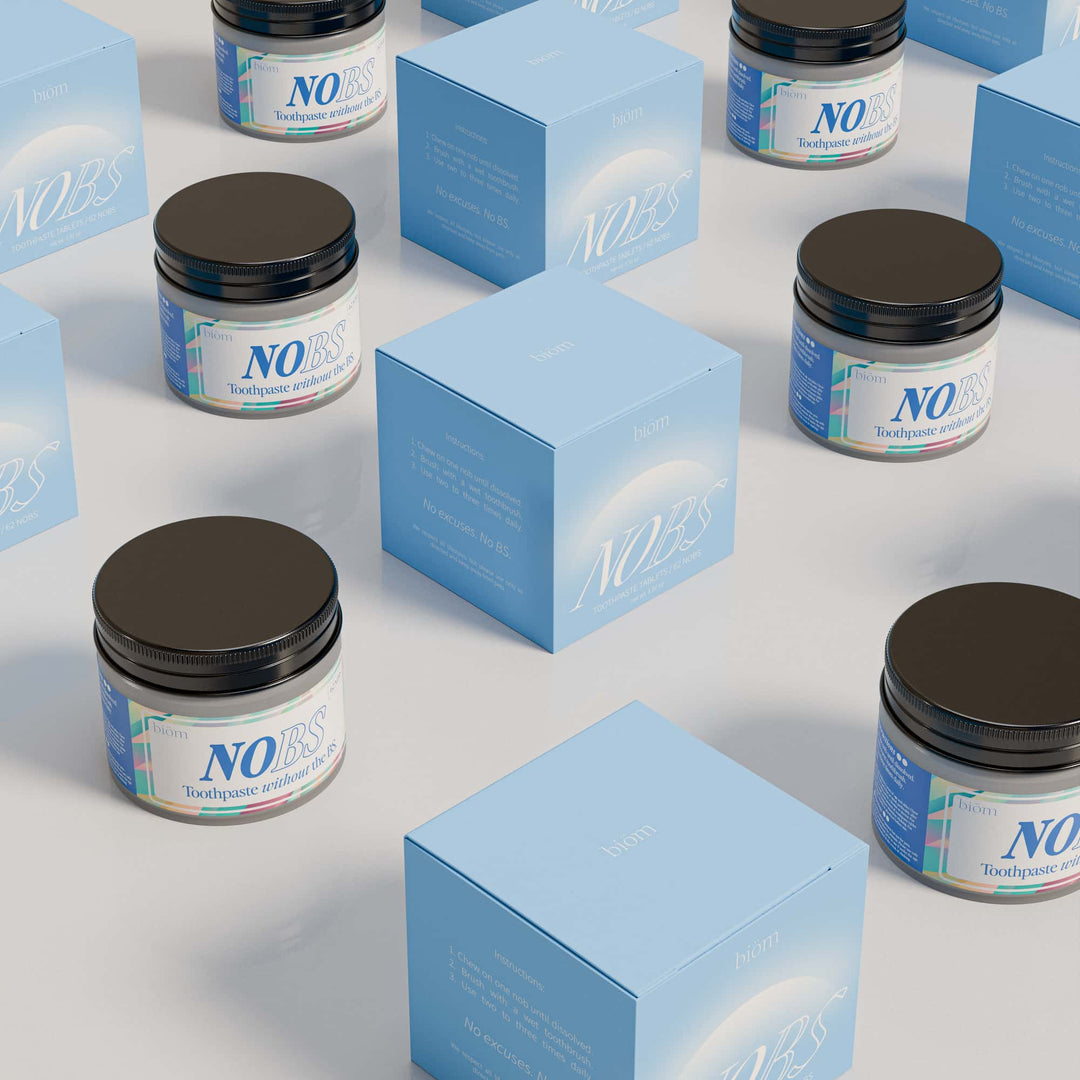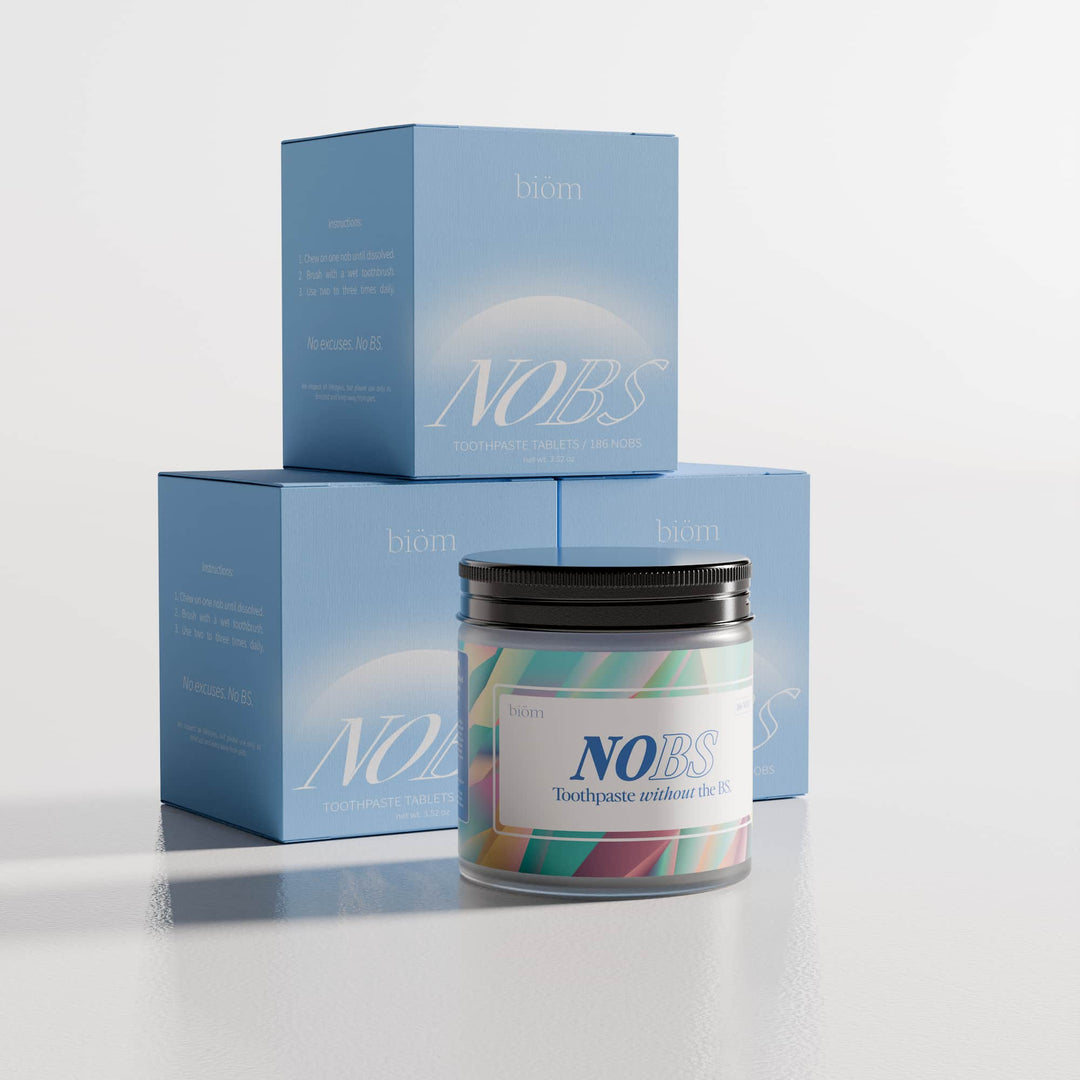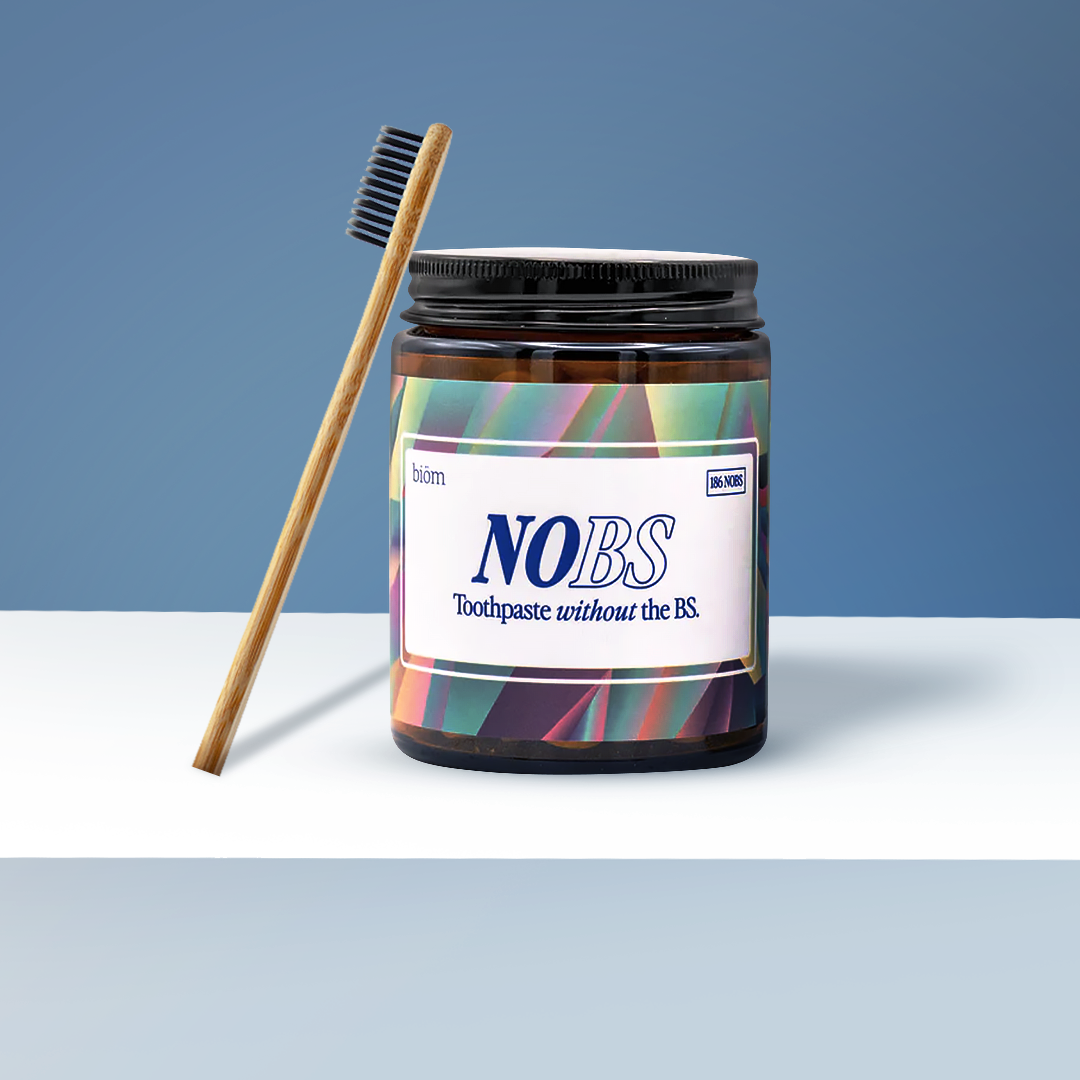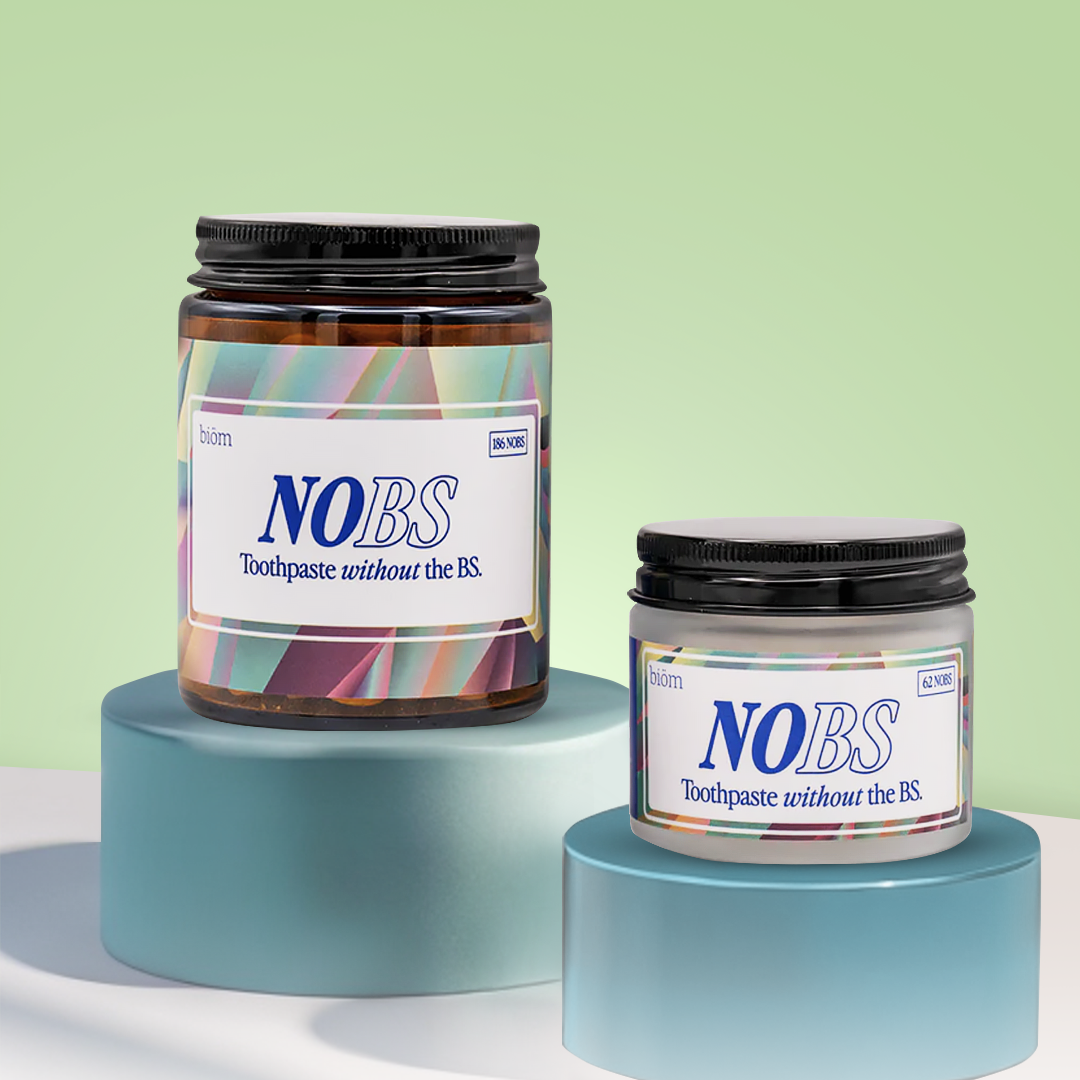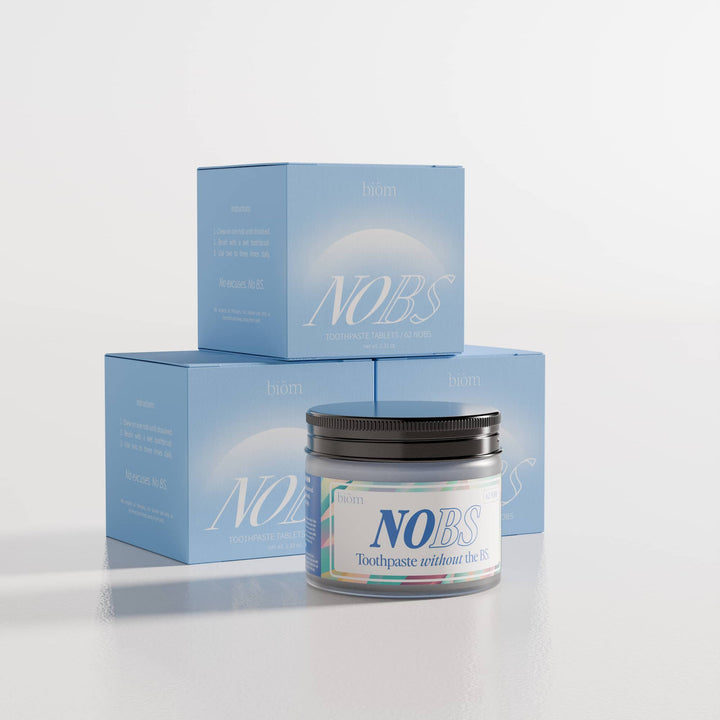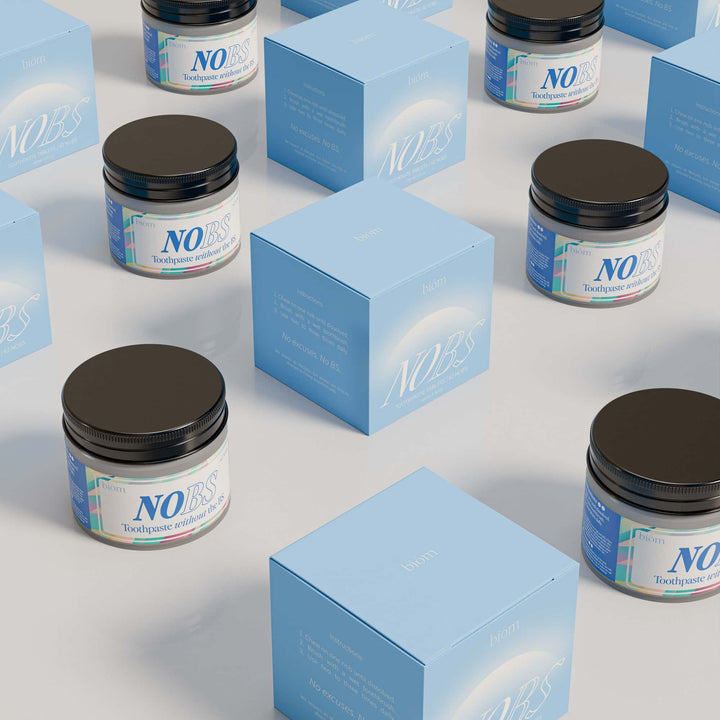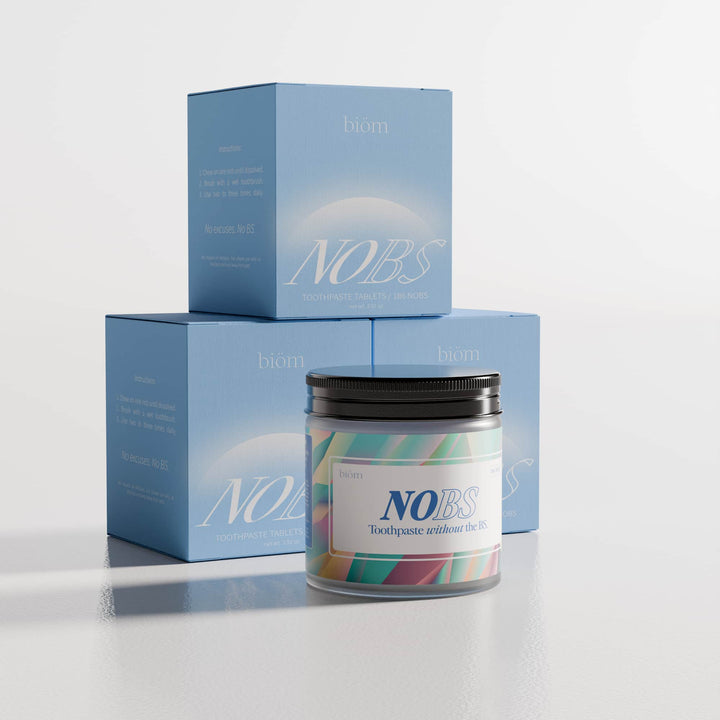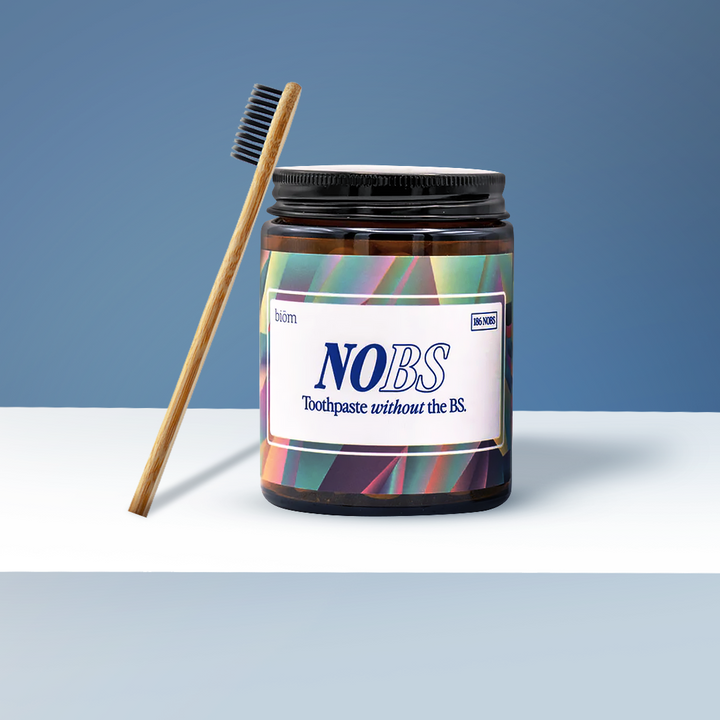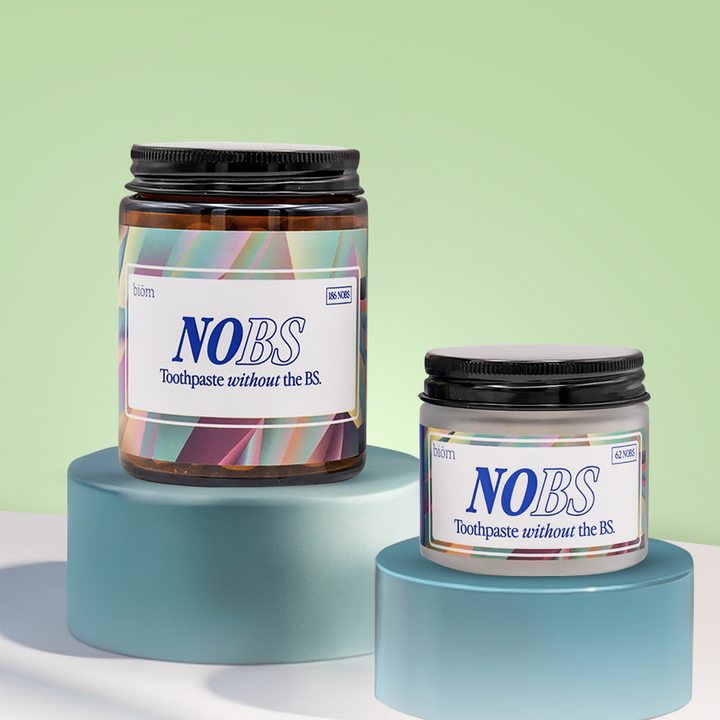How to Reverse Tooth Decay
Reversing tooth decay, particularly in its early stages, is possible through a combination of preventive measures and oral care practices such as:
-
brushing with nano hydroxyapatite toothpaste twice daily
-
using expandable floss to remove bacteria from between your teeth and along the gumline
-
regularly tongue scraping to remove harmful bacteria
-
quitting smoking
-
and reducing your consumption of acidic and sugary foods.
That said, it's important to note that while remineralizing tooth decay is possible, once demineralization progresses to a cavity, it is no longer possible to heal it. At that point, you would need to see a dentist for professional treatment.
In this article, I'll explain everything you need to know about tooth decay and how to reverse it.
What is tooth decay?

Tooth decay, a progressive stage of enamel demineralization, is a common dental condition characterized by the gradual degradation of the tooth structure.
The tooth decay process occurs when acids produced by the bad bacteria in our mouth, primarily Streptococcus mutans, interact with sugary foods from our diet. This interaction leads to the formation of acids that attack the tooth's hard outer layer, which we call enamel.
When the acid produced attacks our enamel, this initiates a process that we call demineralization. Over time, demineralization leads to the initial stage of cavity formation which can result in the development of small openings in our enamel. The openings get progressively larger and eventually penetrate deeper into the tooth, causing symptoms like sensitivity and discomfort.
Eventually, these untreated cavities can no longer be remineralized and must be treated by a dentist through treatments like dental fillings.
To reverse or prevent tooth decay, we use tools like nano hydroxyapatite toothpaste to stimulate a process called remineralization (aka the opposite of demineralization).
What causes tooth decay?

Demineralization and tooth decay are primarily caused by the interaction of acids with tooth enamel. These can be dietary acids or simply acids produced by the bad bacteria in our mouth.
Let's walk through some of the main causes of demineralization:
Bad Bacteria & Plaque
Dental plaque is a thin, sticky film that naturally forms on our teeth. It consists of bacteria colonies that feed on sugars and carbohydrates from the foods we consume.
As they metabolize these sugars, they produce acids as byproducts. These acids can gradually erode the minerals, primarily calcium and phosphate, from our teeth which leads to demineralization.
Regular brushing and flossing help remove dental plaque, reducing the presence of acid-producing bacteria and their harmful effects on enamel.
Dietary Acids
Consuming acidic foods and beverages can directly introduce acids into our mouths, disrupting our oral pH.
For example, citrus fruits, carbonated sodas, and fruit juices are naturally acidic. When these acidic substances come into contact with tooth enamel, they can weaken the enamel's mineral structure, making it more susceptible to demineralization.
Limiting the intake of acidic foods and practicing good oral hygiene can help mitigate the impact of these dietary acids on teeth.
Poor Oral Hygiene
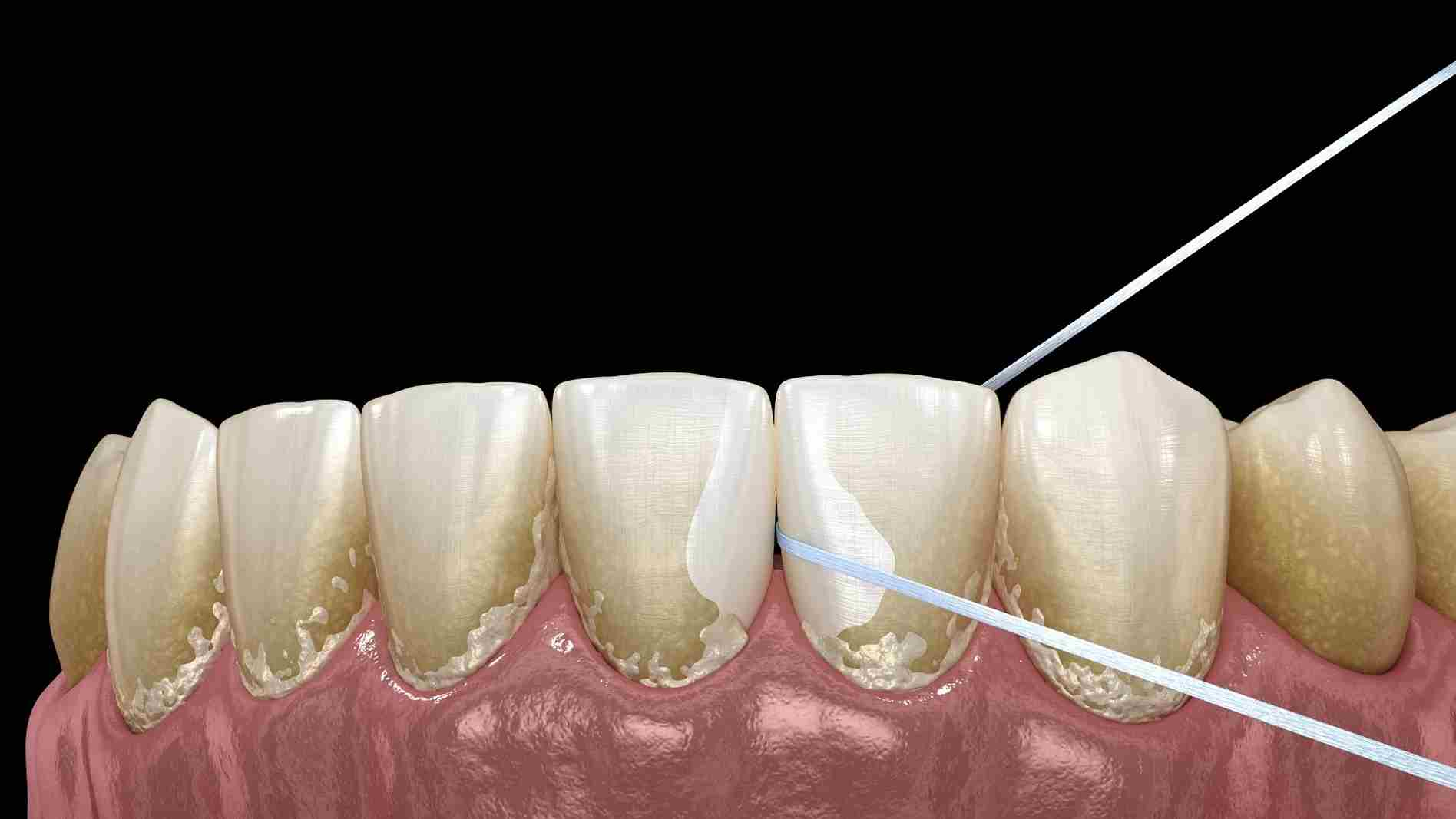
Inadequate oral hygiene practices, such as infrequent or insufficient brushing and flossing, can lead to dental plaque accumulating on tooth surfaces.
When plaque is not regularly removed, it provides a breeding ground for acid-producing bacteria. These bacteria thrive in the plaque and continuously generate acids as they metabolize sugars.
The prolonged exposure of teeth to these acids can result in demineralization, making regular and thorough oral care essential for preventing enamel damage.
Dry Mouth
Saliva is known for its ability to neutralize acids and support the remineralization of enamel. It's an essential component of your oral microbiome.
However, conditions that reduce salivary flow, such as certain medications, medical conditions, or dehydration, can leave the mouth dry. In a dry mouth environment, acids are not effectively neutralized, and the protective effects of saliva are compromised.
This can lead to an increased risk of enamel demineralization and tooth decay, making it essential for individuals with dry mouth to manage this condition effectively.
To combat dry mouth, certain toothpastes and chewing gums contain xylitol, a compound that has been proven to promote saliva production and normalize oral pH.
Acid Reflux
Conditions like acid reflux (gastroesophageal reflux disease or GERD) or frequent vomiting expose teeth to stomach acids, which are highly acidic and corrosive.
When these strong acids come into contact with tooth enamel, they can rapidly erode the minerals from the enamel surface, leading to demineralization.
Individuals with these conditions are at an elevated risk of enamel damage, and managing acid reflux or vomiting episodes is crucial to protect dental health.
How do cavities form?
Cavities form when acids produced by bacteria in the mouth break down the enamel, the tooth's protective outer layer.
Research indicates that when sugars and starches from food combine with saliva, they create a sticky film called plaque. Scientific studies have found that plaque harbors bacteria that produce acid, which erodes enamel over time. If left untreated, this process continues, leading to small holes or cavities in the tooth.
Furthermore, as the damage progresses, it can reach the dentin, the softer layer beneath the enamel, causing sensitivity and pain. Regular brushing, flossing, and reducing sugar intake can help prevent this process.
Therefore, maintaining good oral hygiene is key to protecting your teeth from cavities.
Can demineralization of teeth be reversed?
Yes, demineralization of teeth can be reversed in its early stages through proper oral care and the use of remineralizing agents.
Research indicates that nano-hydroxyapatite toothpaste can strengthen enamel by replenishing lost minerals. A diet rich in calcium and phosphate, along with reducing sugar intake, helps create an environment conducive to remineralization.
Using saliva-stimulating techniques, such as chewing sugar-free gum, can also support the process naturally. However, once cavities or significant enamel erosion occur, professional dental treatments like fillings may be necessary.
Early detection is key to effectively reversing demineralization and preventing further damage.
Tooth Decay vs. Cavities

Tooth decay and cavities are interconnected terms used to describe different aspects of the same condition.
First, tooth decay is the broader concept, representing the gradual process of damage to tooth enamel. This process occurs when acids produced by oral bacteria interact with sugars and fermentable carbohydrates in the diet.
As these acids attack the enamel, it undergoes demineralization and gradually loses its mineral content. Tooth decay is a continuous process that can progress over time if preventive measures are not taken.
Cavities, on the other hand, are the physical manifestations of advanced tooth decay. They are the actual holes or openings that form in the enamel when demineralization progresses unchecked.
Cavities are permanent structural defects in the tooth and require dental intervention to remove the damaged portion and restore the tooth's integrity.
In essence, tooth decay is the underlying process that leads to the development of cavities, and preventive measures aim to stop or reverse tooth decay in its early stages to prevent the formation of these cavities.
The 5 Stages of Tooth Decay

Tooth decay, also known as dental caries or cavities, typically progresses through five stages:
-
Demineralization: This is the initial stage of early tooth decay, characterized by the loss of minerals from the tooth enamel due to acid attacks from bacteria. The enamel is softer, but it is still possible to remineralize and reverse tooth decay.
-
Enamel Decay: In this stage, the demineralization progresses, and the enamel begins to break down. Small cavities or lesions may form on the surface of the tooth. At this point, professional dental treatment may be necessary to address the damage, although the use of nano hydroxyapatite or fluoride toothpaste may also help.
-
Dentin Decay: If left untreated, decay can penetrate the enamel and reach the dentin, the softer layer beneath the enamel. Dentin decay progresses more rapidly than enamel decay and may lead to increased tooth sensitivity and discomfort.
-
Pulp Involvement: In this stage, decay advances through the dentin and reaches the pulp, which contains nerves and blood vessels. This often results in severe pain and requires immediate dental intervention, typically in the form of a root canal treatment.
-
Abscess Formation: If decay continues to progress without treatment, it can lead to the formation of an abscess, a painful pus-filled infection at the tooth's root. Abscesses can cause severe tooth pain, swelling, and systemic health issues and require prompt dental attention.
Understandably, early intervention is key to preventing the progression of decay and avoiding more extensive dental problems. In the event tooth decay advances to later stages, be sure to seek out a dentist for professional tooth decay treatment.
Tooth Decay Symptoms

Tooth decay, also known as dental caries or cavities, manifests with various symptoms that can indicate its presence and progression.
For example, one of the initial signs of tooth decay is increased tooth sensitivity, where affected teeth become more responsive to temperature changes or sweet and acidic foods. As decay advances, you may experience persistent or intermittent toothaches, often characterized by discomfort or pain in the affected area.
Additionally, visible indicators of tooth decay include the presence of holes, pits, or dark spots on the tooth's surface, along with changes in tooth color, such as white, brown, or black spots. Perhaps worst of all, bad breath or an unpleasant taste in your mouth can result from bacterial activity within the cavity.
In more advanced stages, you may encounter pain while chewing, as well as swelling around the affected tooth or the presence of pus, indicating an infection. If you experience these symptoms, be sure to make an appointment with your dentist as soon as possible for professional treatment.
Preventing and Reversing Tooth Decay

To prevent and reverse tooth day, we can take measures such as:
-
brushing twice daily with nano hydroxyapatite toothpaste and avoiding rinsing afterward
-
flossing with expandable floss at least three times per week
-
using a tongue scraper nightly to get rid of harmful bacteria
-
and eating a healthy diet low in acidic or sugar foods
Specifically, brushing your teeth at least twice a day for two minutes each with nano hydroxyapatite and a soft-bristled toothbrush will help remove plaque and disrupt the growth of harmful bacteria.
In fact, nano hydroxyapatite is a biomimetic agent that mimics the natural composition of our permanent teeth and supports remineralization.
Basically, nano hydroxyapatite toothpaste deposits calcium and phosphate ions back into enamel which strengthens it and makes it more resistant to demineralization.
In comparing hydroxyapatite vs fluoride, hydroxyapatite toothpaste is equally as effective at remineralization.
Of course, visiting the dentist regularly and limiting sugary and acidic foods are also essential steps to take to promote good oral health. Instead, consider adding natural probiotics to your diet such as fermented foods or calcium rich foods to support your overall health.
Can you reverse cavities?

No, you cannot reverse cavities. While tooth decay can be stopped or reversed through remineralization, deep cavities cannot be remineralized or reversed and must be treated by a professional through a procedure like a root canal.
While some individuals suggest that you can heal cavities naturally, the truth is that the "cavities" they are referring to are likely just initial stages of tooth decay and not true cavities. Ultimately, the decision to fix a cavity with a filling changes from dentist to dentist.
Even though you cannot remineralize cavities, there are steps you can take at home to remineralize tooth decay and prevent cavity formation, including:
-
brushing with nano hydroxyapatite toothpaste
-
maintaining a healthy diet and limiting sugary foods
-
and avoiding dry mouth.
Ultimately, while we cannot reverse cavities, we do have the ability to prevent new ones from forming and maintain good health through a proper oral care routine and lifestyle.
But, does xylitol can reverse cavities?
No, while xylitol toothpaste is good for your teeth, it does not reverse cavities. This is because you cannot remineralize a cavity once it has already formed.
That said, xylitol toothpaste can help in the early stages of cavity formation by promoting remineralization, a process where minerals are redeposited in demineralized tooth enamel. Xylitol increases saliva production, which is rich in minerals like calcium and phosphate that can strengthen tooth enamel and potentially reverse early enamel erosion.
This process can prevent smaller cavities from progressing past the initial stages of tooth decay. However, xylitol toothpaste cannot reverse cavities that have progressed beyond the initial stage of enamel demineralization to form a physical cavity.
Once a cavity has fully formed, you'll have to see a dentist for professional treatment to remove the decay and restore the tooth.
So, while xylitol toothpaste is great for supporting your overall oral health and reversing the early stages of tooth decay, it's not a substitute for professional treatment of established cavities.
When is it too late to reverse cavities?
It is too late to reverse cavities when the decay has progressed beyond the enamel and reached the dentin or pulp of the tooth.
Studies suggest that early-stage cavities, known as incipient or enamel caries, can be reversed through remineralization using fluoride or nano-hydroxyapatite toothpaste. However, once the decay penetrates deeper layers of the tooth, remineralization is no longer effective, and professional treatment, such as fillings or root canals, becomes necessary.
Neglecting treatment at this stage can lead to more severe complications, including tooth infections or abscesses. Regular dental checkups are essential to detect cavities early when they are still reversible.
Therefore, maintaining good oral hygiene, a balanced diet, and avoiding sugary snacks can help prevent cavities from progressing.
The Bottom Line: Reversing Tooth Decay

Reversing tooth decay, especially in its early stages, is possible through a process called remineralization.
Remineralization involves depositing essential minerals, primarily calcium and phosphate, back into the tooth enamel, making it stronger and more resistant to damage. We can support the natural remineralization process by brushing with nano hydroxyapatite toothpaste and flossing with expandable floss daily.
It's important to note that the effectiveness of remineralization depends on the extent of the decay and early intervention. In advanced stages, dental treatment like fillings may be necessary to address the damage.
At what stage is tooth decay irreversible?
Tooth decay becomes irreversible at the stage of advanced decay, where the damage has progressed beyond the enamel and into the dentin or pulp of the tooth.
Once the decay reaches the dentin, it can lead to cavities, and if it continues to advance, it may result in infection or abscesses in the pulp.
At this point, restorative treatments such as fillings, root canals, or extractions are necessary, as the tooth cannot heal on its own.
Frequently Asked Questions
Is it possible to reverse tooth decay?
Yes, it is possible to reverse tooth decay, particularly in its early stages, through a process called remineralization. Remineralization involves depositing essential minerals like calcium and phosphate back into the tooth enamel, strengthening it and making it more resistant to damage. Nano hydroxyapatite toothpaste can support this process as it is made of the same material that your teeth and bones are. The said, the success of remineralization depends on the extent of decay and early intervention. Advanced decay and cavities require dental treatment to address the damage effectively.
Can tooth decay be saved?
Yes, tooth decay can be saved and treated, especially when detected in its early stages. The process involves several approaches, depending on the extent of the decay. In early stages, remineralization can occur by depositing essential minerals back into the enamel, making it more resistant to further damage. You can support remineralization at home by brushing daily with a nano hydroxyapatite toothpaste. Once a physical cavity has formed, dentists can remove the decayed portion and fill the cavity with materials like dental fillings or composite resins to restore the tooth's integrity. In more advanced cases, when decay has reached the inner pulp, a root canal may be necessary to remove infected or damaged tissue and save the tooth.
What neutralizes tooth decay?
To neutralize tooth decay, it's essential to focus on remineralization and prevent enamel demineralization. Remineralization involves depositing essential minerals like calcium and phosphate back into the tooth enamel, strengthening it and making it more resistant to damage. Nano hydroxyapatite toothpaste can support this process as it is made of the same material that your teeth and bones are. Additionally, maintaining a balanced diet rich in calcium, phosphate, and vitamin D provides the necessary nutrients for enamel health and neutralizes decay by supporting remineralization.
Can you bring back a rotten tooth?
A tooth that has severely decayed, often described as "rotten," cannot be restored to its original, healthy state. However, dental professionals can provide treatments to address the damage and preserve oral health. In the early stages of decay, remineralizing through nano hydroxyapatite toothpaste is possible. However, when decay reaches the inner pulp and causes infection or pain, a root canal treatment may be necessary to remove the infected tissue and seal the tooth. In more extensive cases, a crown or cap may be placed to protect and strengthen the tooth. In some situations, when the decay is too advanced or if the tooth poses a risk to overall oral health, extraction may be the only option.
How can I restore my decayed teeth naturally?
To restore your decayed teeth, it's essential to focus on remineralization and prevent enamel demineralization. Remineralization involves depositing essential minerals like calcium and phosphate back into the tooth enamel, strengthening it and making it more resistant to damage. Nano hydroxyapatite toothpaste can support this process as it is made of the same material that your teeth and bones are. The said, the success of remineralization depends on the extent of decay and early intervention. Advanced decay and cavities require dental treatment to address the damage effectively.
What is the best treatment for tooth decay?
The best treatment for tooth decay depends on its severity, but early-stage decay can often be treated with fluoride treatments or dental sealants to help remineralize the enamel. For cavities, fillings made of composite resin, amalgam, or glass ionomer are commonly used to restore the tooth's structure. In more advanced cases, a root canal or tooth extraction may be necessary to address infection or extensive damage.
Is there a risk of having tooth decay?
Yes, there are several risks associated with tooth decay, including pain, infection, and the potential for tooth loss if not treated promptly. Additionally, decay can lead to more serious health issues, such as abscesses or systemic infections, which may require more invasive treatments. Poor oral health from untreated tooth decay can also affect overall health, leading to complications like heart disease or diabetes.
How can you prevent a cavity from forming in the first place?
To prevent cavities from forming, practice good oral hygiene by brushing your teeth at least twice a day with nano hydroxyapatite toothpaste and flossing daily to remove plaque from between your teeth. Regular dental check-ups and professional cleanings help catch early signs of decay and provide treatments or sealants for added protection. Additionally, maintaining a balanced diet low in sugary snacks and beverages can significantly reduce the risk of cavity formation.
Can a cavity heal on its own?
No, a cavity cannot heal on its own once the enamel is permanently damaged. Early-stage cavities, limited to demineralization, can be reversed with proper oral hygiene, fluoride, or nano-hydroxyapatite toothpaste. However, untreated cavities will continue to progress and require professional dental treatment to prevent further damage.
Can I stop a cavity from growing?
Yes, you can stop a cavity from growing if it is in its early stages. Maintaining good oral hygiene, using fluoride or nano-hydroxyapatite toothpaste, and reducing sugar intake can help remineralize the enamel and halt cavity progression. Regular dental checkups are also essential to monitor and manage the cavity before it worsens.
How do you fix demineralization of teeth?
Demineralization of teeth can be addressed by using nano-hydroxyapatite toothpaste to restore lost minerals and strengthening enamel. Eating a balanced diet rich in calcium and reducing sugar intake also supports remineralization. Regular dental check-ups can help monitor and prevent further damage.
Does demineralization on teeth go away?
Yes, early-stage demineralization can go away with proper oral care and the use of remineralizing products. However, advanced stages may require professional dental treatment to restore the affected teeth.
How long does it take for teeth to fully remineralize?
The remineralization process can take several weeks to months, depending on the extent of demineralization and consistent use of remineralizing agents like nano hydroxyapatite.
How long does it take for teeth to fully remineralize?
The remineralization process can take several weeks to months, depending on the extent of demineralization and consistent use of remineralizing agents like nano hydroxyapatite.
How to fix rotten teeth without a dentist?
While it’s best to consult a dentist for severe tooth decay, you can manage early stages by improving oral hygiene and using products with nano-hydroxyapatite (nHA). Nano-hydroxyapatite helps remineralize enamel and protect teeth from further damage. Pair it with regular brushing, flossing, and a healthy diet to reduce decay progression.
How to heal cavities in 2 days at home?
Cavities can’t heal fully in just two days, but you can start strengthening your teeth by using nano-hydroxyapatite toothpaste. nHA works by filling in small enamel defects and preventing further decay. Combine this with proper brushing, avoiding sugar, and maintaining oral hygiene for effective results over time.
How to remove tooth tartar at home?
Removing tartar at home is challenging, but you can reduce it by brushing with a nano-hydroxyapatite toothpaste, which strengthens enamel and prevents buildup. Use interdental brushes or floss to clean between teeth, and rinse with an antibacterial mouthwash. For hardened tartar, visiting a dentist is essential for professional cleaning.


